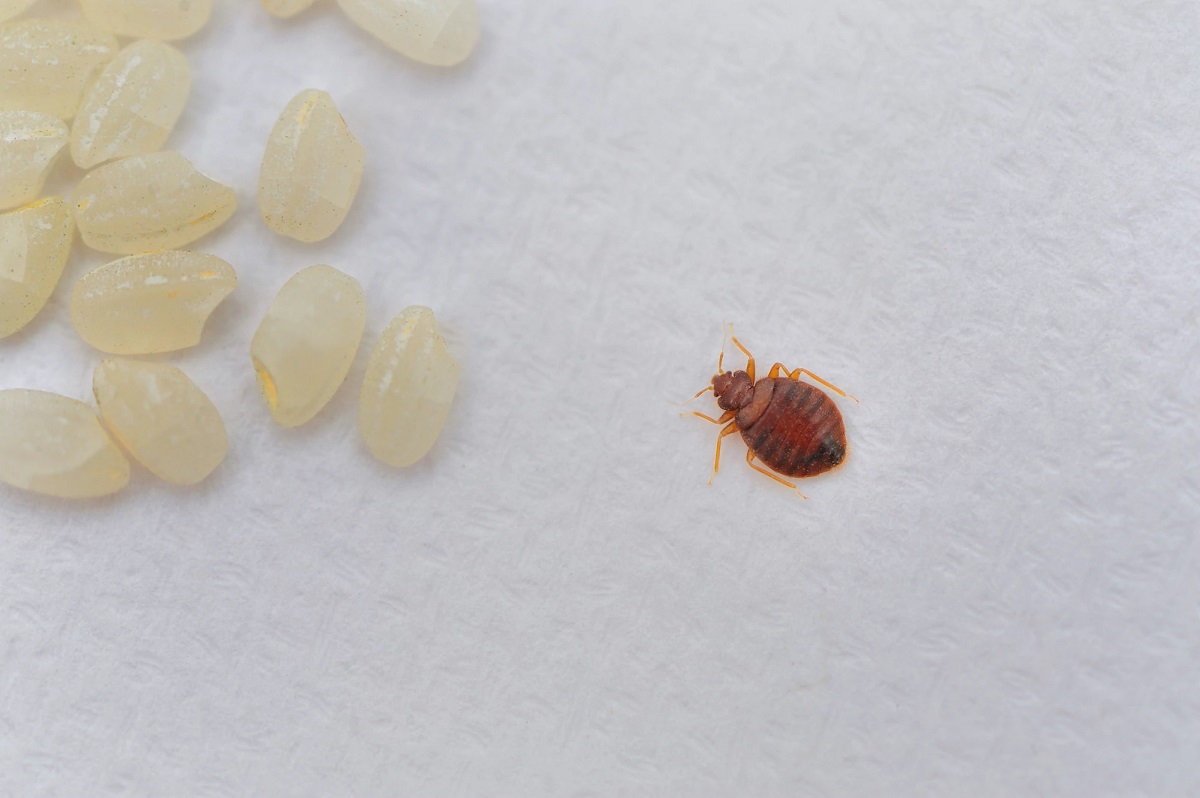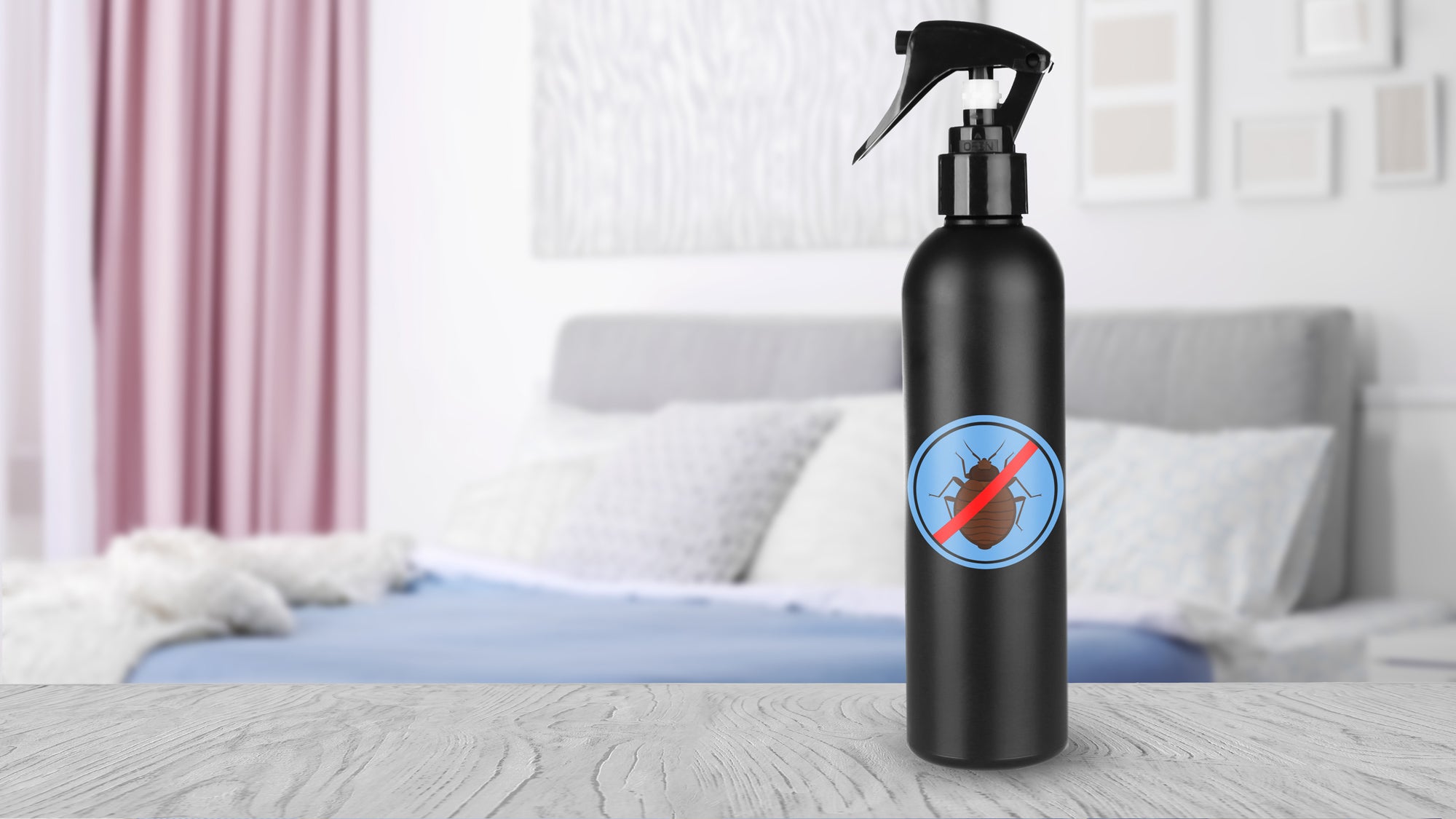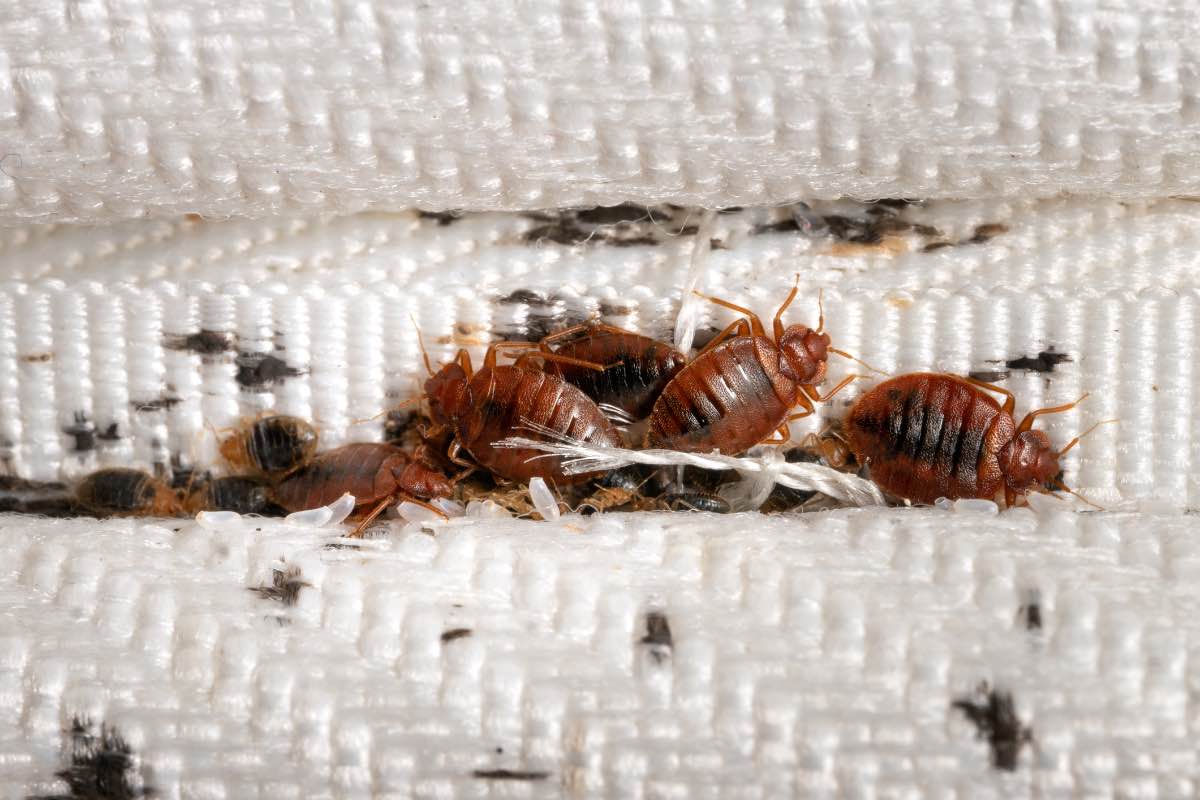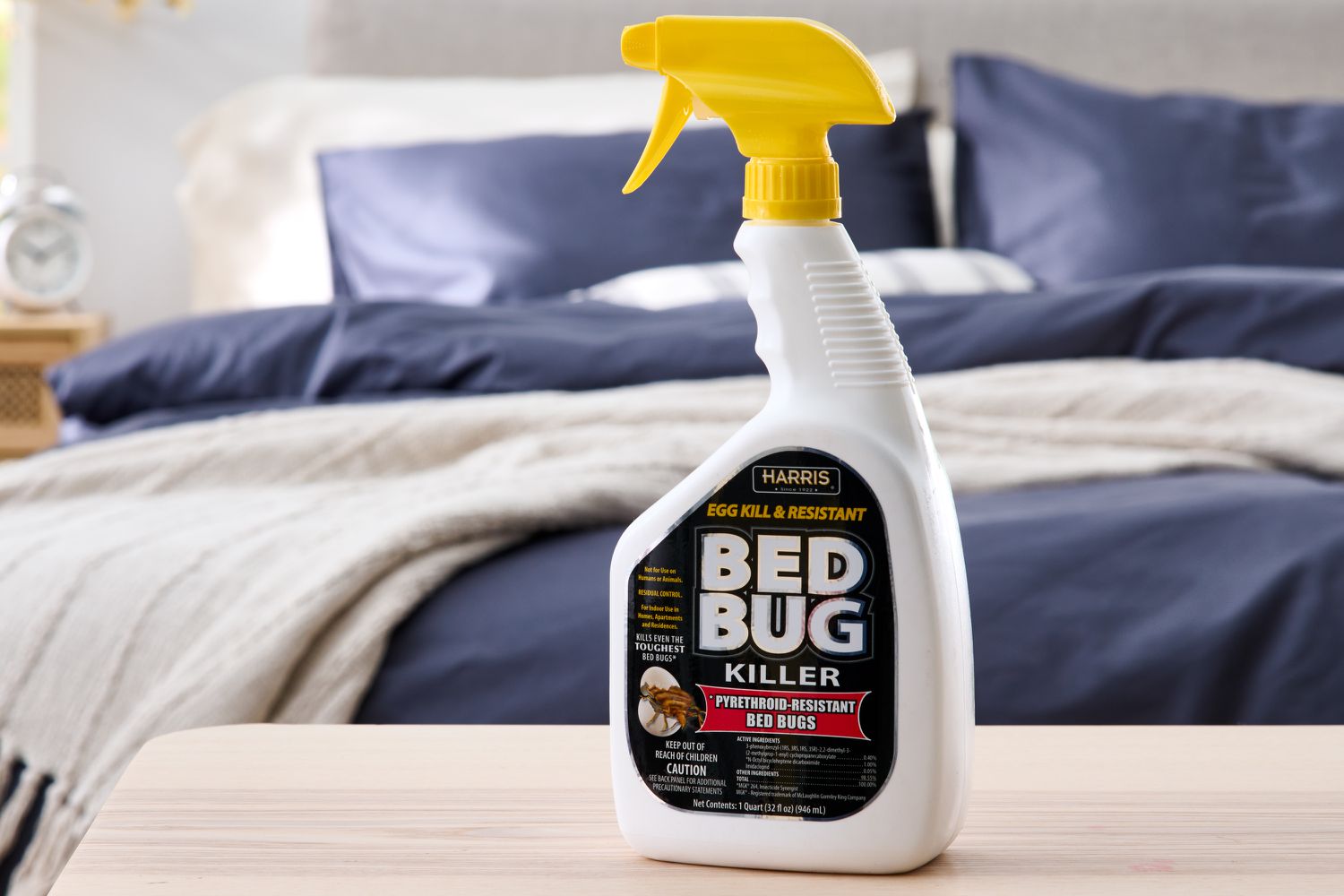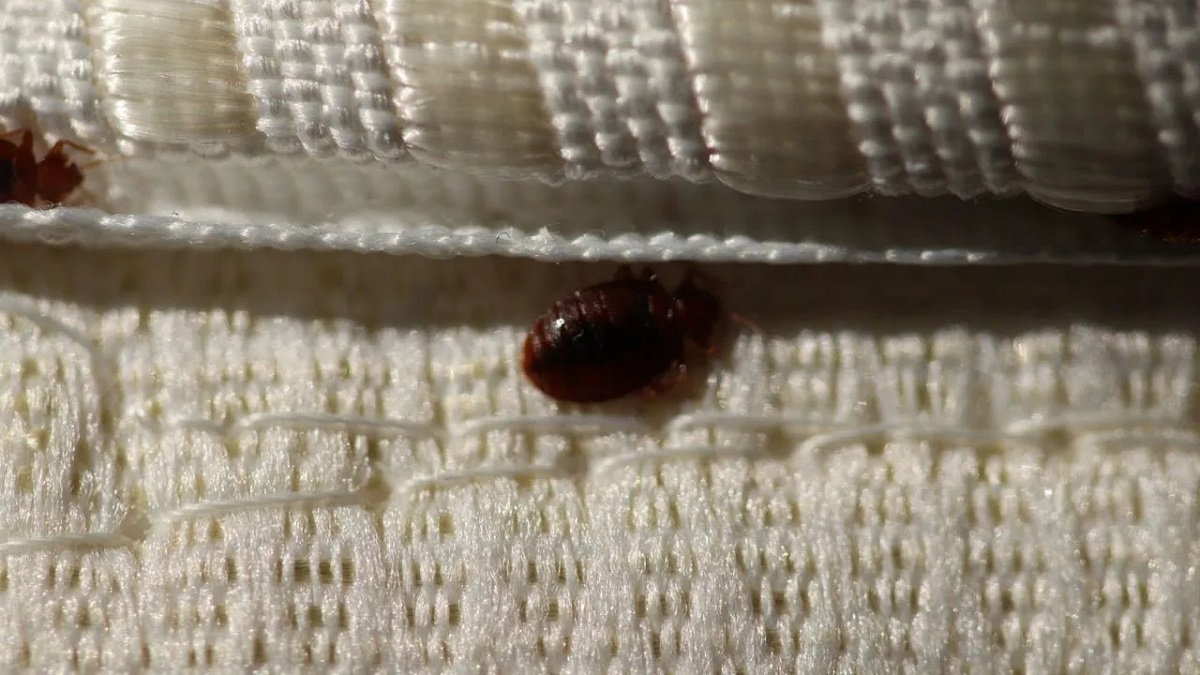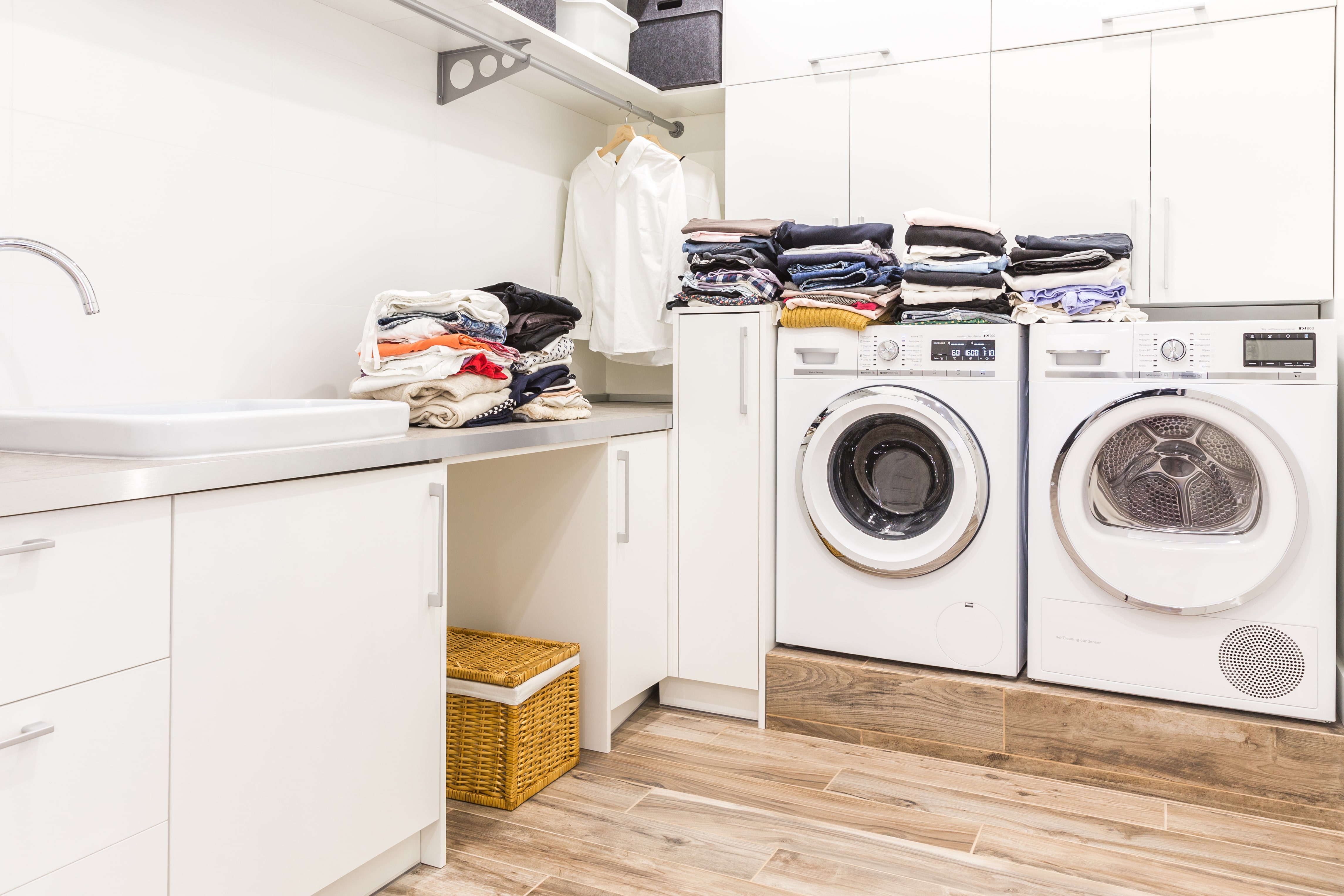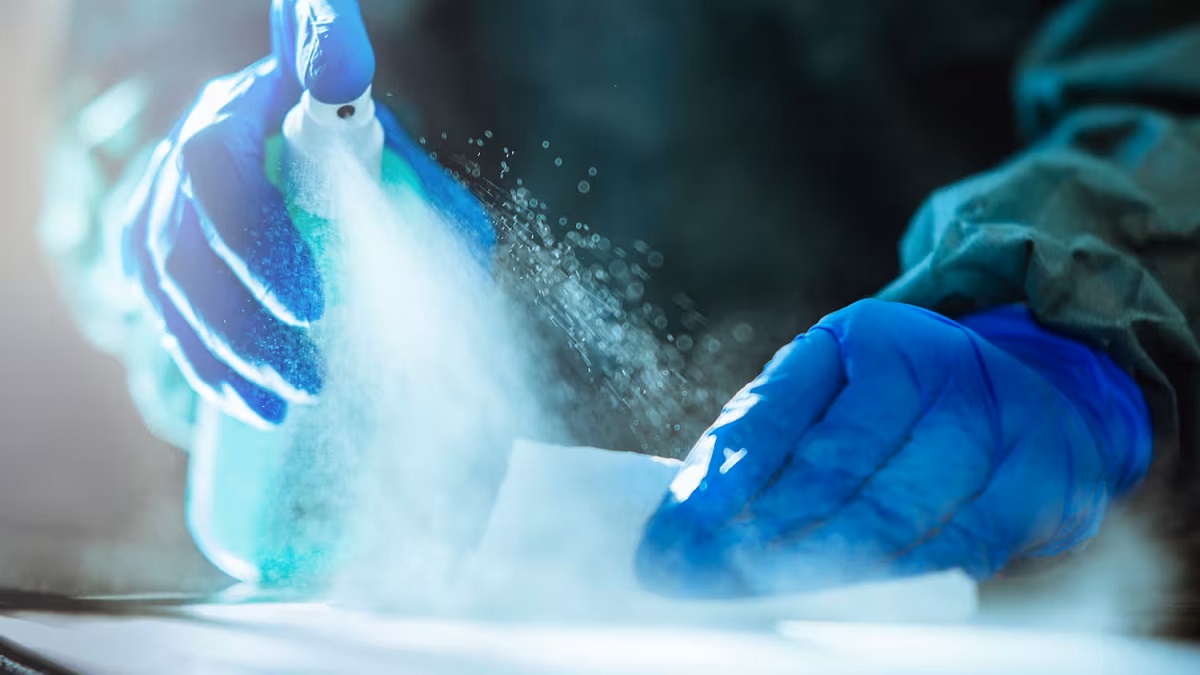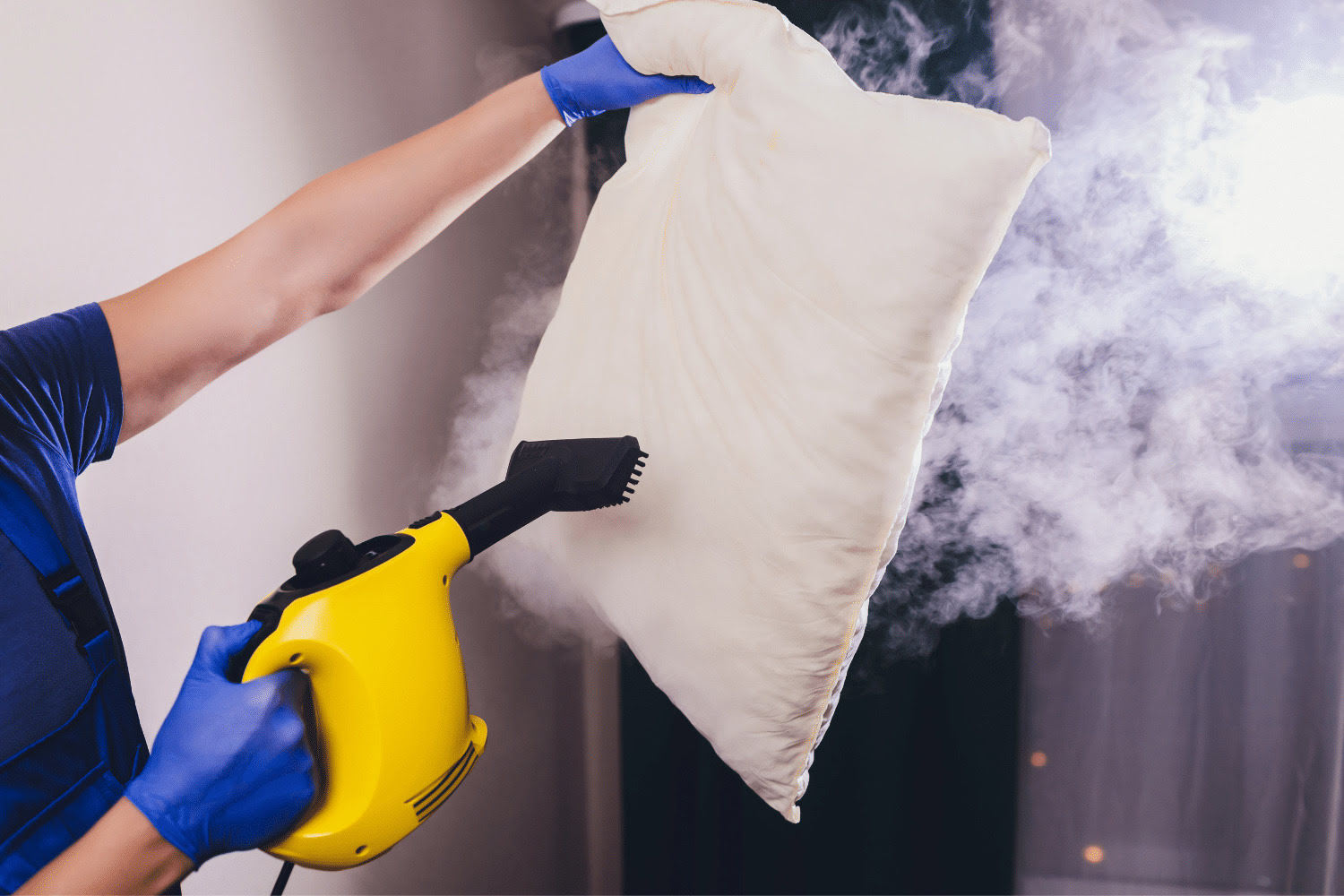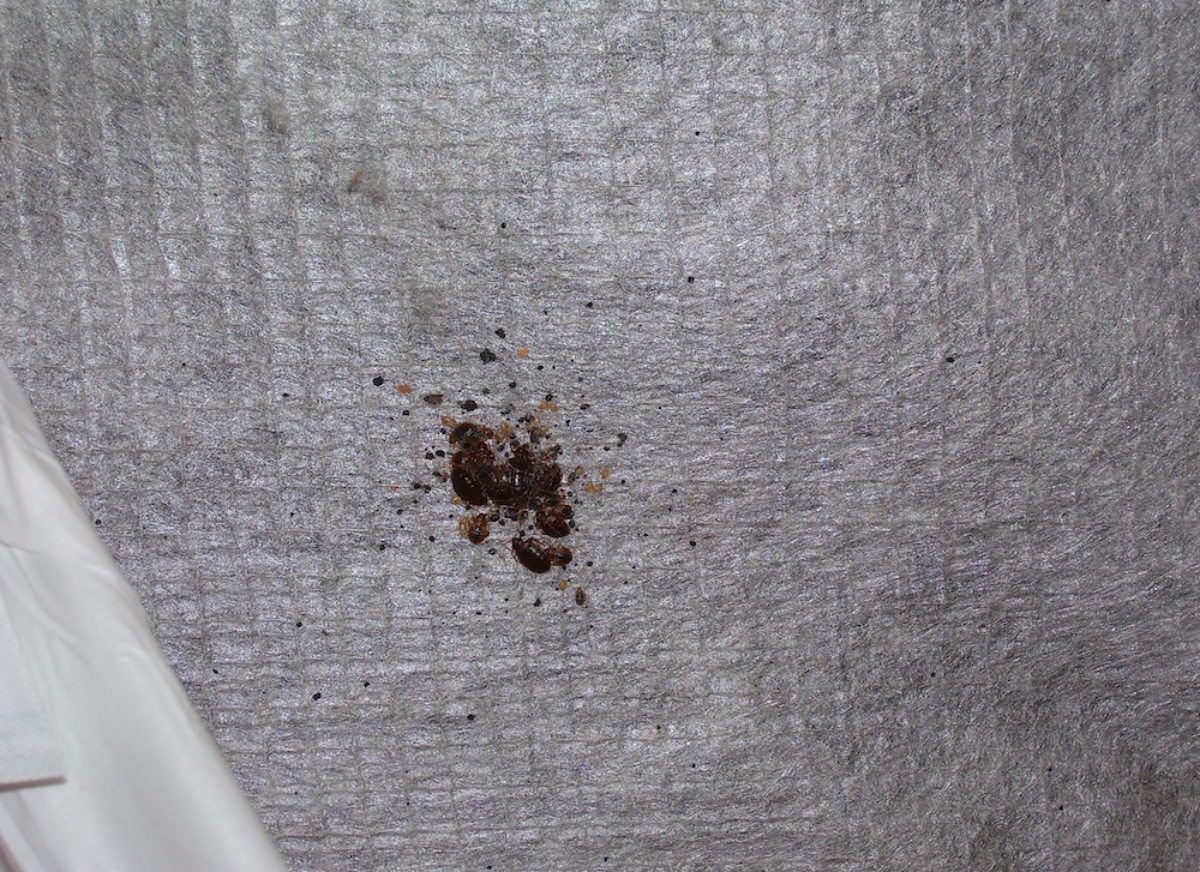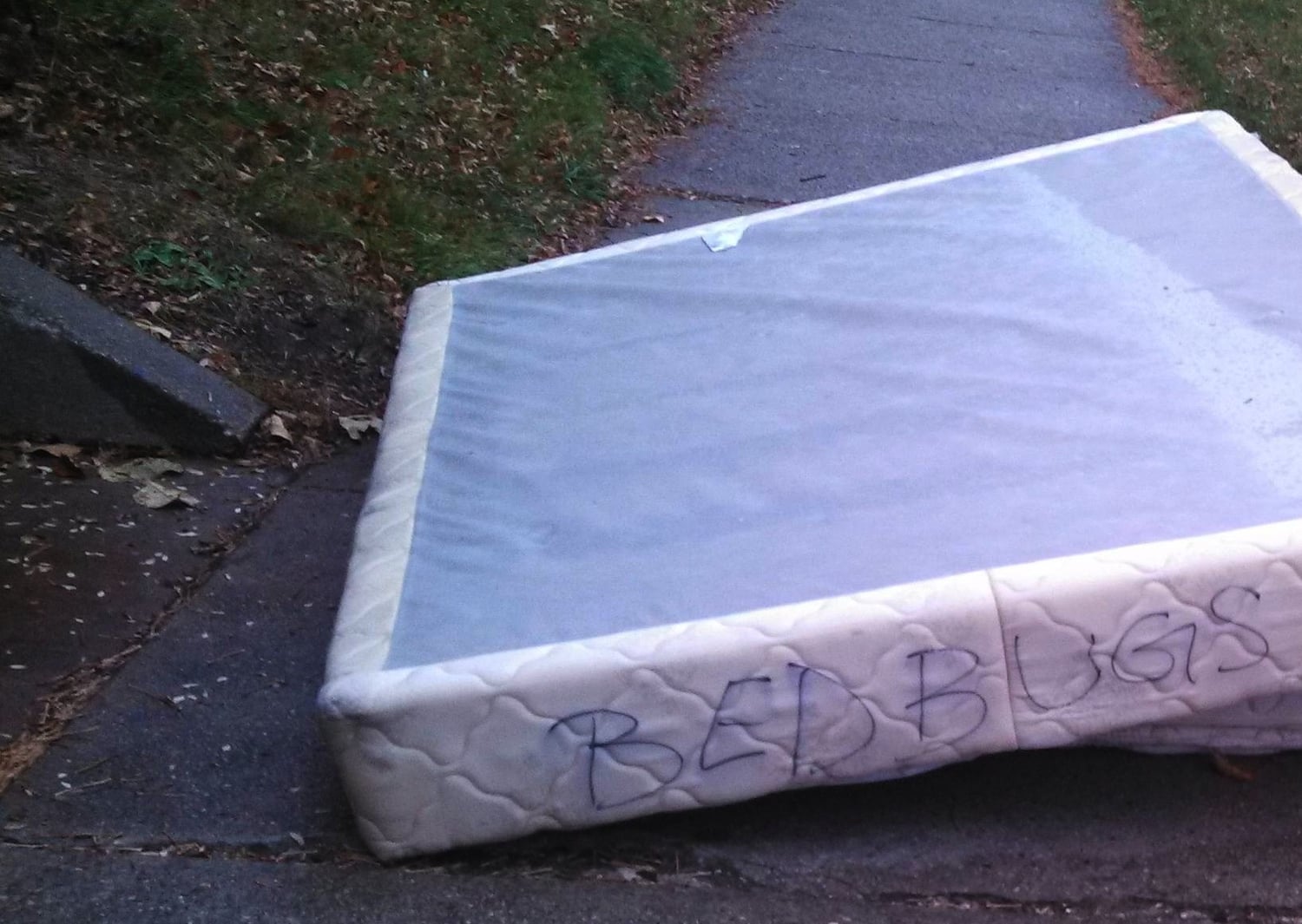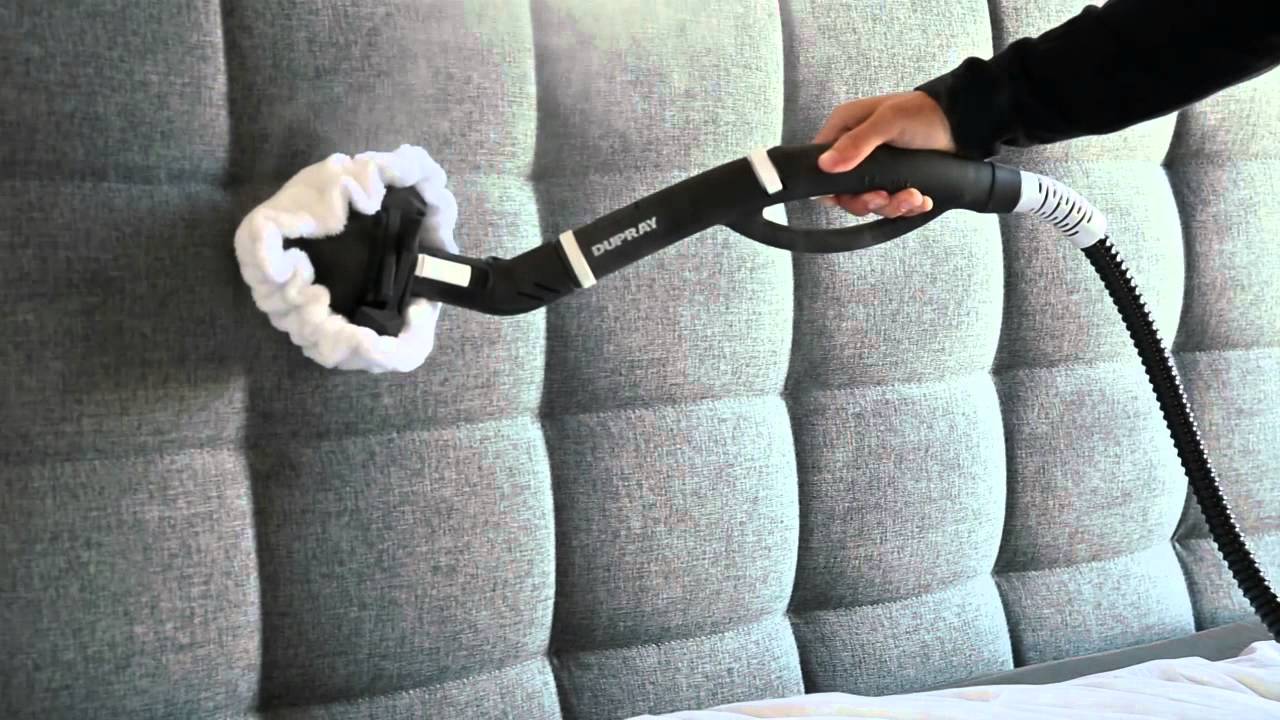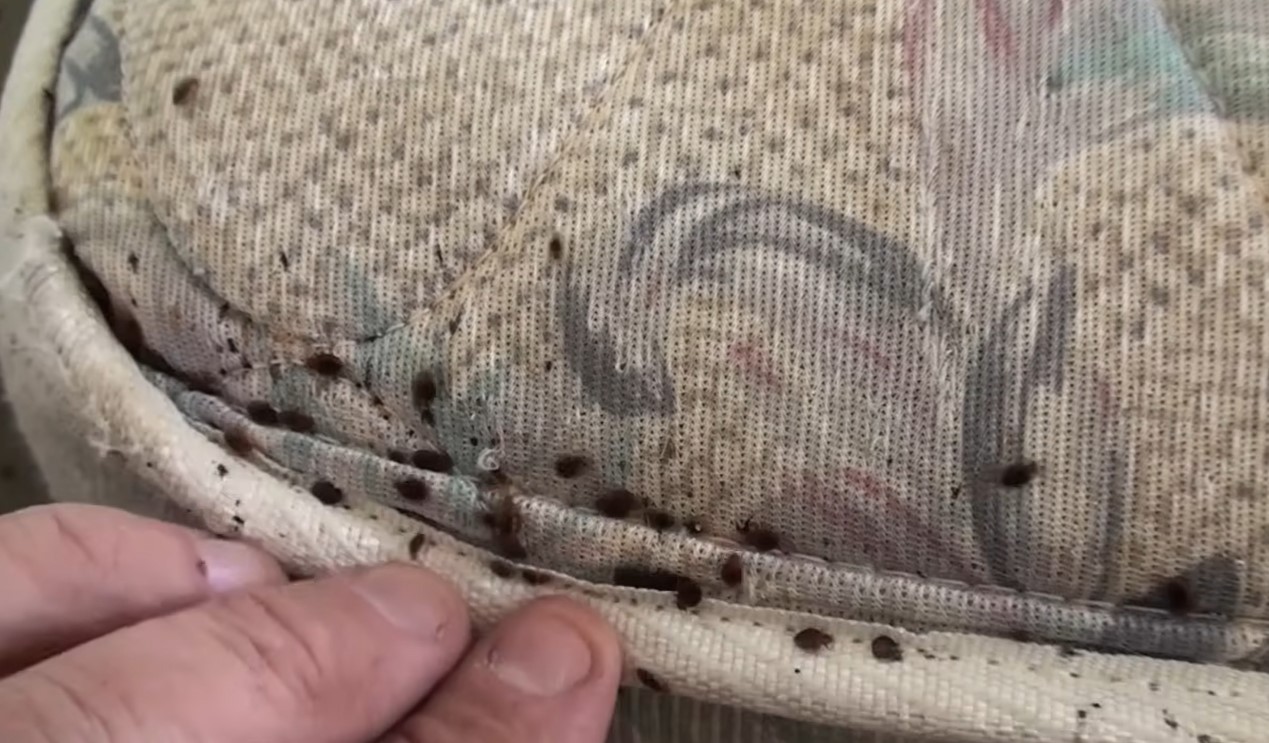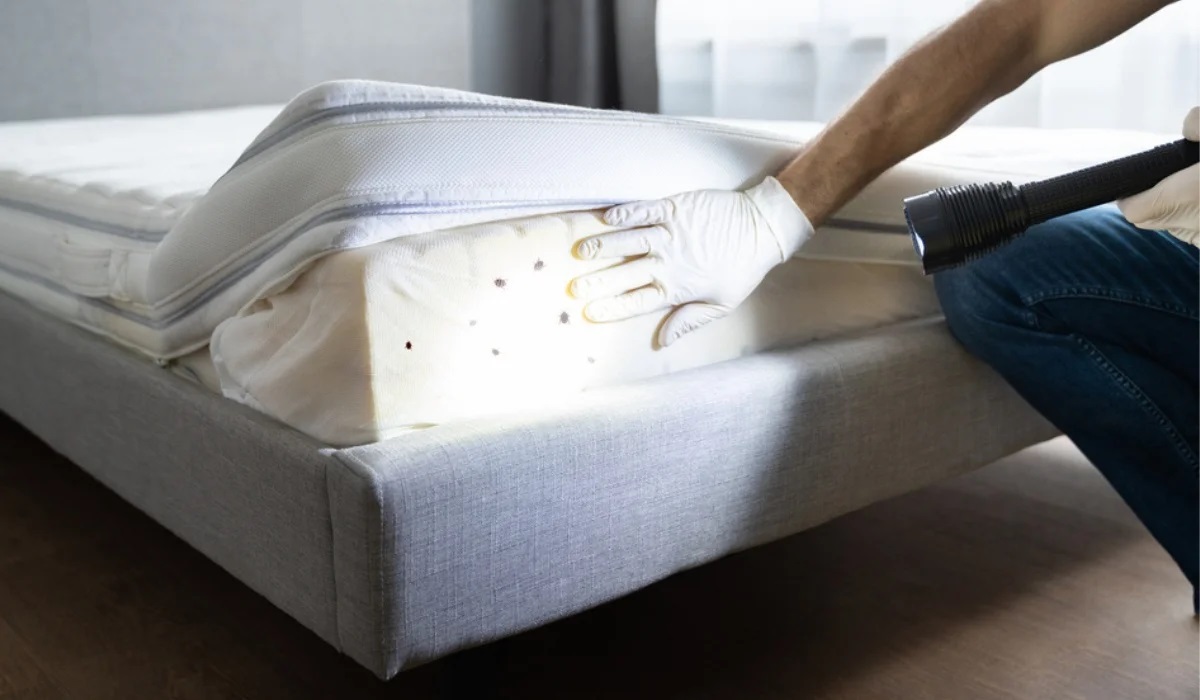Home>Furniture>Bedroom Furniture>How To Kill Bed Bugs On A Mattress
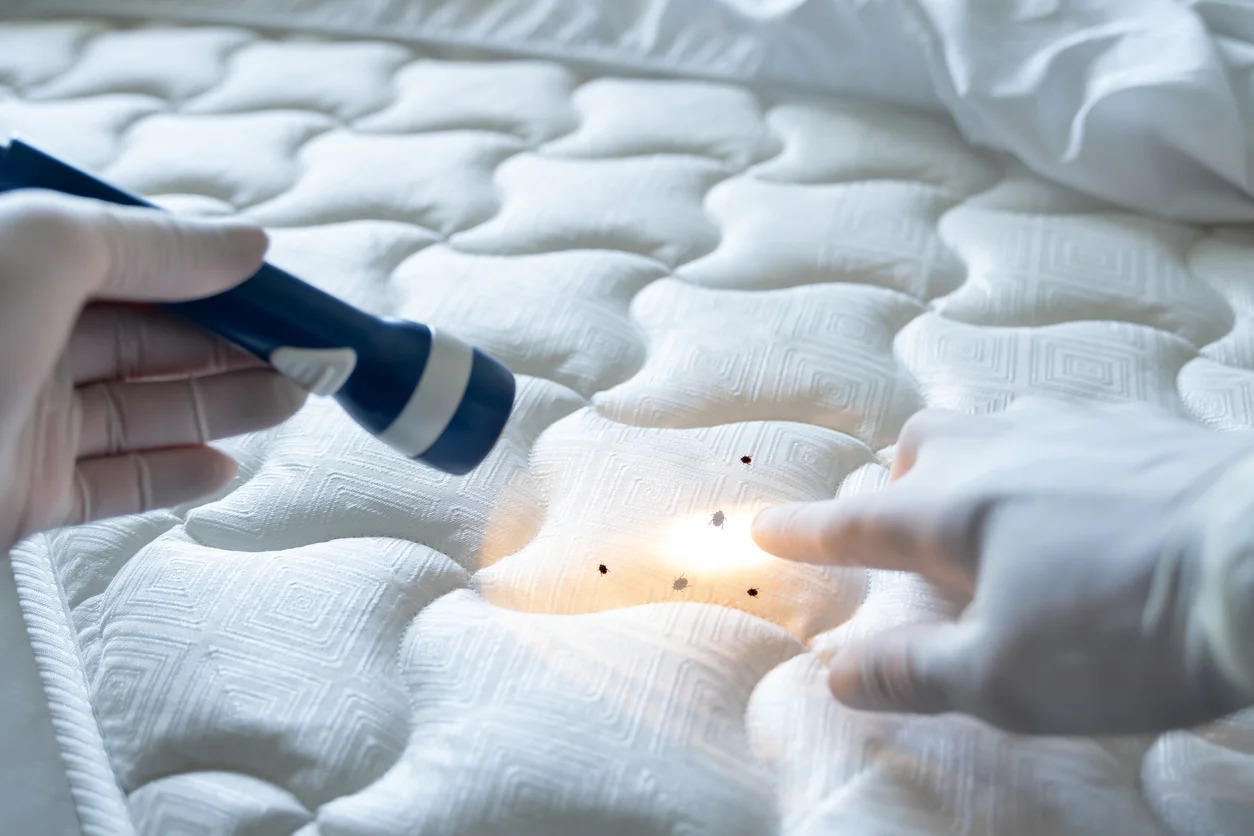

Bedroom Furniture
How To Kill Bed Bugs On A Mattress
Modified: January 9, 2024
Learn effective methods to eliminate bed bugs from your mattress and restore a bug-free environment in your bedroom. Find expert tips and advice on bedroom furniture maintenance.
(Many of the links in this article redirect to a specific reviewed product. Your purchase of these products through affiliate links helps to generate commission for Storables.com, at no extra cost. Learn more)
Introduction
Bed bugs are a common nuisance that can infest your mattress and disrupt your sleep. These tiny insects feed on human blood and can cause itchy bites and allergic reactions. Dealing with a bed bug infestation can be frustrating, but with the right knowledge and techniques, you can effectively eliminate these pests and ensure a clean and bug-free mattress.
In this article, we will guide you through the process of getting rid of bed bugs on a mattress. We’ll cover the steps for identifying bed bugs, preparing the mattress for treatment, and various methods of eliminating them, including vacuuming, insecticide application, steam treatment, and encasing the mattress to prevent future infestations.
With the information and strategies provided in this article, you’ll be equipped to tackle any bed bug problems and restore the comfort and peace of mind in your bedroom.
Key Takeaways:
- Say goodbye to bed bugs by vacuuming, steaming, and encasing your mattress. Regular maintenance and early detection are crucial for a bug-free sleep environment.
- Identifying, preparing, and treating your mattress is essential for eliminating bed bugs. Combine methods and stay vigilant to prevent infestations.
Read more: How To Kill A Bed Bug
Identifying Bed Bugs on a Mattress
Before you can effectively treat a bed bug infestation on your mattress, it is essential to be able to identify these pesky insects. Bed bugs are small, reddish-brown insects that are about the size of an apple seed. They have flat bodies that allow them to hide in tight spaces, such as mattress seams, cracks, and crevices.
Here are a few signs that indicate the presence of bed bugs on your mattress:
- Bites: Waking up with itchy, red bumps in a linear or clustered pattern is a common indication of bed bug bites.
- Dark stains: You may notice small, dark stains on your sheets, pillowcases, or mattress. These stains are actually bed bug droppings.
- Bed bug eggs: Look for tiny, pearly white eggs, similar in size to a speck of dust, on your mattress or in the areas surrounding it.
- Live bugs: Bed bugs are nocturnal creatures, so it is unlikely you will spot them during the day. However, if you do see small, reddish-brown bugs crawling on your mattress or nearby furniture, it is a clear sign of an infestation.
To thoroughly inspect your mattress for bed bugs, use a flashlight and magnifying glass to examine the seams, folds, and tufts. Check the headboard, bed frame, and nearby furniture as well, as bed bugs can easily hide in these areas.
If you suspect a bed bug infestation but cannot find any visible signs, consider placing bed bug interceptors or traps under the legs of your bed. These devices can capture and prevent bed bugs from reaching your mattress, making them easier to detect.
It is important to note that bed bugs can also infest other areas of your bedroom, such as carpets, curtains, and furniture. Therefore, it is crucial to address the infestation comprehensively to prevent their spread and re-infestation.
Preparing the Mattress for Treatment
Before you start treating your mattress for bed bugs, it is essential to properly prepare it to maximize the effectiveness of the treatment. Preparing the mattress involves a few essential steps to ensure that the bed bugs are exposed to the treatment and have limited places to hide.
Here’s how to prepare your mattress for bed bug treatment:
- Strip the bed: Remove all bedding, including sheets, pillowcases, and blankets. Place them in sealed plastic bags to prevent bed bugs from escaping and infesting other areas of your home.
- Inspect the mattress: Carefully inspect the entire mattress, focusing on seams, folds, and tufts, to identify any visible signs of bed bugs or their eggs. If you spot any bed bugs, vacuum them up immediately.
- Vacuum the mattress: Use a vacuum cleaner with a HEPA filter to thoroughly vacuum the mattress. Pay extra attention to the seams and edges where bed bugs are likely to hide. Dispose of the vacuum bag in a sealed plastic bag outside your home.
- Steam clean: Consider using a steam cleaner to treat your mattress. The high temperature steam can effectively kill bed bugs and their eggs. Make sure to follow the manufacturer’s instructions and allow the mattress to dry completely before proceeding with other treatments.
- Declutter the room: Remove any unnecessary items, such as clothing, books, or clutter, from the bedroom. This helps eliminate potential hiding spots for bed bugs and makes it easier to inspect and treat the area.
- Seal cracks and crevices: Use caulk or sealant to seal any cracks or crevices in the walls, baseboards, or furniture near your bed. This reduces hiding places for bed bugs and prevents their entry into your mattress.
- Move furniture away from walls: Pull your bed away from the walls and keep other furniture at least several inches away as well. This makes it harder for bed bugs to reach your mattress and makes it easier for you to treat the surrounding areas.
By following these steps, you can ensure that your mattress is properly prepared for treatment, making the subsequent steps more effective in eliminating the bed bugs infestation.
Vacuuming the Mattress
Vacuuming is an essential step in treating a mattress for bed bugs. It helps physically remove the bugs, their eggs, and any debris that may be present on the surface. Vacuuming not only reduces the bed bug population but also eliminates allergens and improves overall cleanliness.
Follow these steps to effectively vacuum your mattress:
- Choose the right vacuum: Use a vacuum cleaner with a strong suction power and a HEPA filter. HEPA filters can capture tiny particles, including bed bugs and their eggs, preventing them from being released back into the air.
- Prepare the vacuum: Ensure that the vacuum bag or canister is empty and in good condition. If using a bagless vacuum, empty the canister and clean the filter to optimize suction.
- Start from the top: Begin vacuuming from the top of the mattress, working your way down. Pay extra attention to seams, folds, and tufts, as these are the areas where bed bugs tend to hide.
- Use the crevice tool: Attach the crevice tool to the vacuum cleaner and use it to reach into tight spaces where bed bugs may be lurking. Run the tool along the seams and edges of the mattress to ensure thorough removal.
- Go slow and steady: Move the vacuum cleaner slowly and use overlapping strokes to ensure that bed bugs and their eggs are effectively sucked up. Don’t rush through the process as this may lead to incomplete removal.
- Dispose of the vacuum bag: After vacuuming, immediately remove the vacuum bag or empty the canister into a sealed plastic bag. This prevents bed bugs from escaping and re-infesting your home.
- Repeat the process: Repeat the vacuuming process multiple times, especially if you have a severe bed bug infestation. Regular vacuuming helps significantly reduce the population and prevents the bugs from spreading.
Remember to clean the vacuum cleaner thoroughly after each use to prevent the bugs from escaping and reinfesting your home. This can be done by wiping down the vacuum with a damp cloth and disinfecting the attachments if necessary.
Vacuuming alone may not fully eliminate a bed bug infestation, especially if the bugs have spread to other areas of your bedroom. It is crucial to combine vacuuming with other treatment methods for a more comprehensive approach.
Applying Insecticide
Applying insecticide is an effective method to control and eliminate bed bugs on a mattress. It helps to kill the bugs and their eggs, disrupting their life cycle and preventing further infestation. However, it is crucial to choose the right insecticide and follow safety guidelines to protect yourself and others.
Here are the steps to safely apply insecticide to your mattress:
- Choose a suitable insecticide: Look for an insecticide specifically formulated for bed bugs. Read the label carefully to ensure it is safe for use on mattresses and follow the instructions provided.
- Prepare the area: Open windows and ensure proper ventilation in the room before applying the insecticide. This helps to dissipate any fumes or odors.
- Protect yourself: Wear protective clothing, such as gloves and a mask, to minimize exposure to the insecticide. Follow the safety instructions on the product label.
- Apply to infested areas: Target areas where bed bugs are present, such as seams, edges, and crevices of the mattress. Use a brush or nozzle attachment to apply the insecticide evenly.
- Avoid over-saturation: Do not oversaturate the mattress with insecticide, as excessive moisture can damage the mattress. Follow the manufacturer’s instructions regarding the amount to be used.
- Allow proper drying time: Give the insecticide sufficient time to dry before placing bedding back on the mattress. This helps to ensure the effectiveness of the treatment and prevents staining or damage to fabrics.
- Repeat the process if necessary: If the bed bug infestation persists, you may need to repeat the insecticide application after a couple of weeks. This helps to target newly hatched bed bugs that were not affected by the initial treatment.
- Dispose of contaminated items: Any items that cannot be treated with the insecticide, such as heavily infested bedding, should be sealed in plastic bags and disposed of properly to prevent re-infestation.
It is important to note that some insecticides may not be suitable for use on mattresses, particularly those that come in direct contact with the skin. In such cases, consider using alternative methods or consult a professional exterminator for guidance.
Always follow the manufacturer’s instructions and safety guidelines when using insecticides to ensure the safety of yourself, your family, and your pets. If in doubt, consult a pest control professional who can provide expert advice and assistance.
Vacuum your mattress thoroughly, paying special attention to seams and crevices where bed bugs may hide. Use a stiff brush to dislodge eggs. Then, encase your mattress in a bed bug-proof cover to trap any remaining bugs.
Read more: How To Kill Bed Bugs Instantly
Using Steam Treatment
Steam treatment is an effective and chemical-free method to kill bed bugs on a mattress. High-temperature steam helps penetrate the mattress fabric and eliminates bed bugs and their eggs, providing thorough and efficient eradication.
Here’s how to use steam treatment to eliminate bed bugs on your mattress:
- Select a steam cleaner: Choose a steam cleaner specifically designed for eliminating bed bugs. Ensure that it can reach temperatures above 120°F (49°C) to effectively kill the bugs and their eggs.
- Prepare the mattress: Remove all bedding and ensure the mattress is dry before proceeding with the steam treatment. Excess moisture can lead to mold and damage the mattress.
- Thoroughly steam the mattress: Starting from the top and working your way down, slowly pass the steam cleaner over the surface of the mattress. Pay close attention to seams, edges, folds, and any visible signs of bed bugs.
- Focus on infested areas: Spend extra time steaming areas where bed bugs tend to hide, such as tufts, seams, and along the edges of the mattress. Direct the steam into these crevices to ensure maximum penetration.
- Be thorough and patient: Make sure to cover the entire mattress, moving the steam cleaner slowly to ensure sufficient exposure to high temperature. Steaming may take longer for larger mattresses or heavily infested areas.
- Allow the mattress to dry completely: Once you have thoroughly steamed the mattress, leave it to dry completely. This may take a few hours, depending on the ventilation and humidity levels in the room.
- Repeat the process if necessary: If you notice any remaining bed bug activity or if the infestation persists, repeat the steam treatment after a few weeks to address any newly hatched bugs that were not eliminated initially.
- Consider professional help: If you don’t have access to a suitable steam cleaner or if the infestation is severe, seeking professional pest control assistance may be necessary to ensure complete eradication.
Steam treatment is an effective method for treating a mattress infested with bed bugs. However, it is important to remember that steam treatment alone may not be sufficient to eliminate bed bugs from your entire bedroom. It should be combined with other targeted treatments and preventive measures to fully eradicate the infestation.
When using a steam cleaner, carefully follow the manufacturer’s instructions to ensure safe and effective use. Always prioritize safety by using protective gloves and eyewear, and keep children and pets away from the treatment area.
Encasing the Mattress
Encasing your mattress is a preventive measure that helps protect it from future bed bug infestations. Mattress encasements create a physical barrier, preventing bed bugs from entering or exiting the mattress, and making it easier to identify and eliminate any potential infestations.
Follow these steps to properly encase your mattress:
- Select a bed bug-proof encasement: Choose a high-quality mattress encasement specially designed to be bed bug-proof. Look for encasements that are labeled as “bite-proof,” “allergen-proof,” or “bed bug certified.”
- Measure your mattress: Take accurate measurements of your mattress height, width, and length. This ensures that the encasement you choose fits properly and securely without leaving any gaps.
- Prepare the mattress: Remove any existing bedding or encasements from the mattress. Inspect the mattress for any signs of bed bugs and vacuum it thoroughly before proceeding.
- Carefully place the mattress into the encasement: Begin by sliding one end of the mattress into the encasement and gradually work your way to the other end. Use the enclosure’s zipper to close it securely.
- Ensure a snug fit: Make sure the encasement fits tightly around the mattress. Smooth out any wrinkles or folds to prevent bed bugs from finding hiding spots within the encasement.
- Seal the zipper: Bed bug-proof encasements typically feature a secure zipper closure and a fabric flap that covers the zipper. Ensure that the zipper is completely sealed and the fabric flap is properly positioned.
- Repeat for the box spring: If you have a box spring, consider encasing it as well. Follow the same steps to encase the box spring, creating a comprehensive barrier against bed bugs.
- Maintain the encasement: Regularly inspect the encasement for any signs of damage or wear. Replace it if you notice any holes, tears, or other compromised areas that may allow bed bugs to enter or escape.
Mattress encasements provide long-term protection against bed bugs by preventing them from accessing the mattress and hiding in its crevices. Additionally, encasements also help in trapping and killing any existing bed bugs inside the mattress by cutting off their access to food sources.
It is important to note that encasing the mattress alone is not a complete solution for eliminating bed bugs. It should be combined with other treatment methods, such as vacuuming, steam treatment, or insecticide application, to effectively eradicate an infestation.
Keep in mind that encasements may need to be left on the mattress for an extended period, as bed bugs can survive without feeding for several months. Regularly monitor the encasement and consult a professional exterminator if you suspect a persistent or recurring bed bug problem.
Cleaning and Maintaining a Bed Bug-Free Mattress
Once you have successfully treated your mattress for bed bugs, it is important to maintain its cleanliness and prevent future infestations. By following proper cleaning and maintenance practices, you can ensure that your mattress remains bed bug-free and provides a healthy sleeping environment. Here are some tips to help you clean and maintain your mattress:
- Regularly vacuum: Vacuum your mattress regularly, even after treating it for bed bugs. This helps to remove any dust, allergens, and debris that may accumulate over time. Pay special attention to the seams, folds, and corners of the mattress.
- Wash bedding regularly: Launder your bedding, including sheets, pillowcases, and mattress protectors, on a regular basis. Use hot water and a high heat drying cycle to effectively eliminate any remaining bed bugs or eggs.
- Inspect for signs of bed bugs: Routinely inspect your mattress for any signs of bed bugs, such as dark spots or shed exoskeletons. Catching a potential infestation early allows you to address it promptly before it becomes a larger problem.
- Use mattress protectors: Invest in high-quality, bed bug-proof mattress protectors. These encasements not only safeguard your mattress from bed bugs, but they also provide a barrier against spills, stains, and allergens.
- Avoid eating or drinking in bed: Keep food and drinks away from your mattress to prevent attracting pests and creating an environment conducive to infestations.
- Keep the bedroom clutter-free: Declutter your bedroom and minimize the number of items stored under or near the bed. This reduces the potential hiding spots for bed bugs and makes it easier to detect any signs of an infestation.
- Consider using bed bug traps: Place bed bug traps or interceptors under the legs of your bed to capture any bed bugs trying to climb up and reach your mattress. This helps in monitoring potential infestations and preventing them from spreading.
- Inspect new furniture or second-hand items: Before bringing new furniture or second-hand items into your home, thoroughly inspect them for any signs of bed bugs. Avoid acquiring items from unknown or infested sources.
- Address infestations promptly: If you notice any signs of a bed bug infestation, take immediate action to eliminate the pests. Consult a professional pest control expert to ensure effective treatment and prevention measures.
- Stay vigilant during travel: Bed bugs can hitch a ride on luggage or clothing, so take precautions while traveling. Inspect hotel mattresses and keep your luggage elevated and away from the bed. Upon returning home, carefully inspect your belongings and wash any potentially infested items.
By following these cleaning and maintenance practices, you can help keep your mattress free from bed bugs and maintain a healthy sleeping environment. Regular maintenance and early detection are key to minimizing the chances of a bed bug infestation and ensuring a restful night’s sleep.
Conclusion
Dealing with bed bugs on a mattress can be a frustrating and bothersome experience. However, with the right knowledge and techniques, you can effectively eliminate these pests and create a bed bug-free environment in your bedroom.
In this article, we covered the essential steps for identifying bed bugs on a mattress and preparing it for treatment. We explored methods such as vacuuming, applying insecticide, using steam treatment, and encasing the mattress to prevent future infestations. Additionally, we discussed the importance of cleaning and maintaining a bed bug-free mattress to ensure long-term success.
Remember, it’s crucial to approach bed bug treatment with a comprehensive strategy. Combining different methods and preventive measures increases the chances of eradicating the infestation and preventing its recurrence.
If you are facing a severe infestation or if your efforts to eliminate bed bugs on your mattress are not successful, it may be wise to seek professional help from a pest control expert who has experience in dealing with bed bugs.
By taking proactive steps, keeping your mattress clean, and promptly addressing any signs of bed bugs, you can enjoy a peaceful and restful sleep without the worry of these unwelcome pests.
Remember, prevention is key. Regular monitoring, proper hygiene, and a clutter-free bedroom can significantly reduce the chances of a bed bug infestation. Stay vigilant, take necessary precautions, and enjoy a bed bug-free sleep environment.
Frequently Asked Questions about How To Kill Bed Bugs On A Mattress
Was this page helpful?
At Storables.com, we guarantee accurate and reliable information. Our content, validated by Expert Board Contributors, is crafted following stringent Editorial Policies. We're committed to providing you with well-researched, expert-backed insights for all your informational needs.
